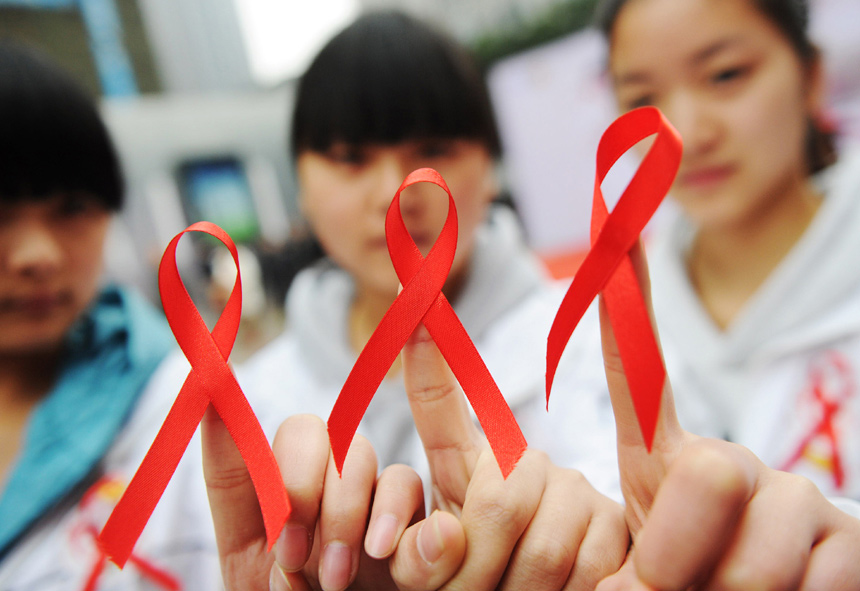New HIV cases on the rise in China. Researcher says it’s because survey expansion
New HIV cases on the rise in China. Researcher says it’s because survey expansion

Ahead of this year’s World AIDS Day, which is held annually on December 1 to raise global awareness of the disease, the Chinese Center for Disease Control and Prevention released (in Chinese) a new report that shows an alarming rise in HIV diagnoses over the past year. According to Wú Zūnyǒu 吴尊友, a leading epidemiologist in China, the surge in the number of HIV-infected people — which increased from 759,000 in 2017 to 1.2 million in 2018 — is mostly because of a sample expansion.
In a press conference on November 23, Wáng Bīn 王斌, deputy head of the center, noted that although China is seeing a growing population of HIV-positive people, the country’s HIV prevalence rate still remains relatively low compared with that of other countries. According to Wang, around every nine in 10,000 Chinese people are living with HIV/AIDS. It’s estimated that there will be 1.25 million AIDS patients in the country by the end of 2018.
The report also sheds light on some HIV-related phenomena that have sparked health concerns among people. In September, an AIDS conference held in Kunming made headlines by revealing that there were more than 40,000 new diagnosed HIV cases in the second quarter of 2018. The appalling number prompted a series of articles trying to tease out the reason. One of them, written by a popular blogger, made a bold claim that “the surge is closely related to African students in China, which abolished its policy to deny entry into the country to foreigners carrying the HIV virus in 2010.”
To dismiss the rumor, Hán Mèngjié 韩孟杰 from the center said in the press conference that the correlation doesn’t exist. “It’s common practice for countries to let in HIV-positive foreigners,” Han said, adding that although the number of foreigners in China diagnosed with HIV tripled in the past eight years, among 2,154 new diagnoses among foreigners in 2018, only 4.6 percent of them were foreign students.
Meanwhile, the report emphasized some worrying data among college students and seniors. In 2017, over 3,000 college students were found affected by HIV and 81.8 percent of them had acquired it through same-gender sexual contact. A relevant survey conducted by the center previously found that despite students’ high awareness of the disease, few of them adopted methods to protect themselves. “Among students who have had sex, only 40 percent of them used condoms,” Han said. Meanwhile, the report suggests an upswing in HIV prevalence among seniors, especially men above 60. “Some seniors don’t make prevention efforts because they think the latency period for HIV is long and the disease is controllable thanks to advances in treatment,” Han explained.
The report doesn’t look particularly bad, especially given that the number of people surveyed expanded significantly from 100 million in 2012 to 200 million in 2017. But the center warned that it could be a harbinger of worse times ahead, since about 30 percent of people infected with the virus in China are still spreading it without acknowledging their HIV status.






